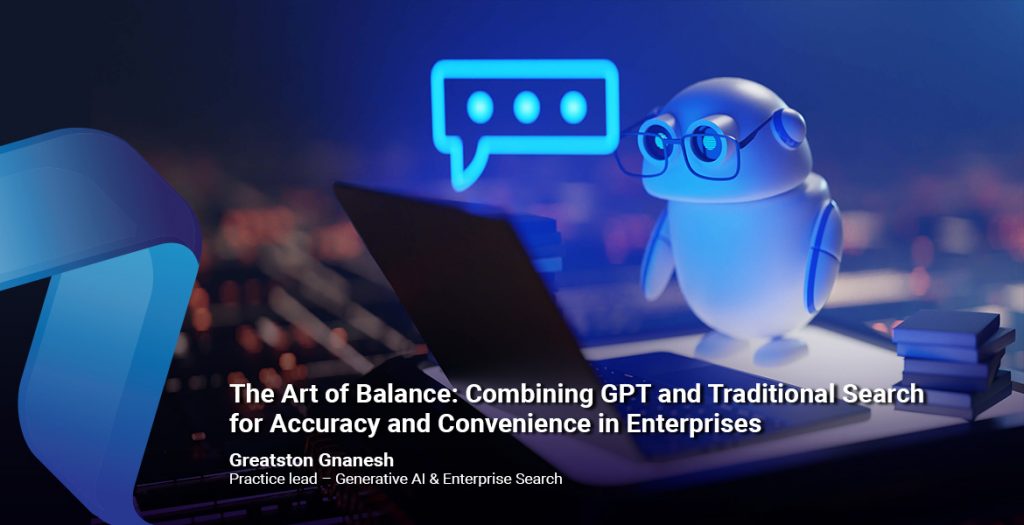Summary:
ChatGPT has stirred excitement as an alternative to traditional search but comes with its own limitations. This article explores how ChatGPT, known for conversational responses, complements traditional search, often more precise in finding information. Rather than competing, ChatGPT and traditional search serve as complementary tools in our information-rich world.
Introduction:
Have you heard the news? AI is taking over the world, one search query at a time. But before you start drafting your surrender letter to our new robot overlords, let’s take a step back and examine whether AI-powered language models like GPT-3 are ready to take over the search engine game. Spoiler alert: they’re not. Let’s dive in.
While large language models like GPT-3 can certainly generate responses to queries, they lack the ability to search through large volumes of documents and extract relevant information in a timely and efficient manner. Search engines, on the other hand, have been specifically designed to do just that – search through massive amounts of information and provide users with relevant results in seconds.
Moreover, search engines are not limited to text-based searches – they can also search for images, videos, and other media types, making them much more versatile than large language models. Additionally, search engines can provide users with a wide range of filters and sorting options to help them find exactly what they’re looking for.
There is no way for Large Language Models to locate or retrieve anything, but they are very good at generating their own responses based on what they have been trained to do. ChatGPT sometimes appears as though it is searching because it surfaces some of the material it has been trained on, but it is not the content itself, but a representation of that content created through the machine’s own interpretation. For instance, if ChatGPT is trained on a dataset of Harry Potter books, it might respond you based on its own understanding of the material, such as talking about characters like Harry Potter and Voldemort, without ever explicitly referencing the book itself.
While large language models have their place in the world of AI and NLP, they are not a replacement for traditional search engines. In fact, with the exponential growth of data and information available on the internet, search engines are more important than ever before. They remain an essential tool for businesses and individuals alike in finding the information they need quickly and efficiently.

“In the realm of search, both GPT and traditional methods hold their ground. It's like combining the wisdom of experience with the innovation of youth – a perfect blend, and in that synergy, a magic unfolds."
– Greatston Gnanesh
Practice lead – Generative AI & Enterprise Search
The Yin and Yang of Information Retrieval:
Two Tools, One Goal – Finding Information. The Interplay Between ChatGPT and Traditional Search Engines can make much better inroads in data findability. They can be used in complementary ways to maximize the benefits of each approach. Here are a few examples:
Starting with a traditional search: When beginning a search for information, starting with a traditional search engine can help to quickly identify relevant sources of information. Once a few good sources have been identified, ChatGPT can be used to ask follow-up questions, clarify information, and generate more nuanced insights.
Using ChatGPT for creative problem-solving: ChatGPT’s ability to generate creative solutions to complex problems can be particularly useful in brainstorming sessions or when exploring innovative ideas. Once a solution or idea has been generated, traditional search engines can be used to conduct further research, find related materials, and evaluate the feasibility of the idea.
Fact-checking with traditional search: When ChatGPT generates a response to a question, it can be helpful to cross-check the information provided with traditional search engines to ensure its accuracy. This is particularly important for sensitive or complex topics where the risk of misinformation is high.
Combining search methods: By combining traditional search methods and ChatGPT, users can take advantage of the strengths of both approaches. For example, traditional search engines can be used to quickly find relevant sources of information, while ChatGPT can be used to summarize key points, generate insights, and provide context.
For example, an employee could ask, ‘Show me the sales trends for the last quarter in the Southeast region.’ The traditional search could locate the data, while GPT interprets the context, compiling a comprehensive report that includes trends, comparisons, and insights.
This fusion of GPT and traditional search offers the best of both worlds – the precision of conventional methods and the understanding of human language through AI. It’s a win-win solution for modern enterprises, making information retrieval more intuitive and insightful.
Conclusion:
While ChatGPT is a powerful and exciting new technology, it’s important to recognize that it cannot replace traditional search engines in all contexts. By understanding the strengths and limitations of both approaches, we can use them in complementary ways to achieve better, more accurate, and more nuanced results. By combining the precision and efficiency of traditional search engines with the creativity and conversational capabilities of ChatGPT, we can unlock new possibilities for knowledge acquisition and discovery. In a fast-paced, information-rich world, it’s more important than ever to have access to a range of search methods and tools. By using ChatGPT and traditional search engines in tandem, we can find the information we need, whenever and wherever we need it.













